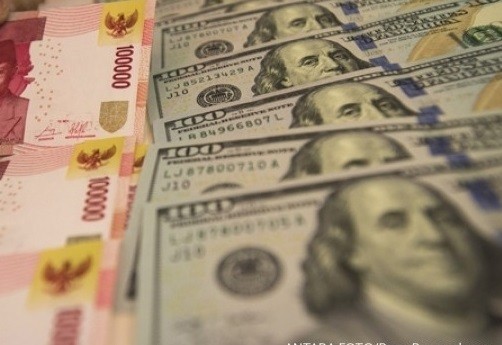Popular Reads
Top Results
Can't find what you're looking for?
View all search resultsPopular Reads
Top Results
Can't find what you're looking for?
View all search resultsWeighing the rupiah’s fate after tax amnesty
Change text size
Gift Premium Articles
to Anyone
An early projection that the rupiah may rise to beyond 10,000 per US dollar has sparked doubt, as reported here.
The figure came from assuming the tax amnesty program would be successful in repatriating the targeted Rp 1 quadrillion (US$76.5 billion) in offshore assets. The target is equal to three-quarters of the central bank’s current foreign reserves.
Is the projection too good to be true, or is it based on solid ground? Bareksa and thejakartapost.com provide you with a more varied perspective below.
A steep increase in one country’s currency will have a serious impact on trade. The value of Indonesian goods will be much pricier for foreign importers. Meanwhile, for Indonesian importers, offshore goods will become much cheaper and prompt them to aim for larger imports.
Since tax amnesty was passed into law on June 28, the rupiah has strengthened by 3.2 percent against the US dollar to Rp 13,080 along with Rp 579 billion (US$44.33 million) of repatriated assets and Rp 3.77 trillion in declared assets.
Year-to-date (as of Aug. 2), the currency has appreciated by 5.5 percent.
=========================
Rupiah movement (Dec. 31, 2015 – Aug. 1, 2016)
 Rupiah movement (Dec. 31, 2015 – Aug. 1, 2016)(Bareksa.com/-)
Rupiah movement (Dec. 31, 2015 – Aug. 1, 2016)(Bareksa.com/-)
=========================
Samuel Sekuritas economist Lana Soelastianingsih believes the rupiah will hover at the range of 10,000 to 12,000 per US dollar thanks to the tax amnesty.
“The recent $9 billion foreign inflow into capital markets has helped the rupiah appreciate to 13,000. Just think how a Rp 1 quadrillion, or $70 billion inflow, could affect the rupiah,” she said.
However, she said the full impact of the multi-billion dollar repatriated assets would ultimately depend on the central bank’s final decision, between choosing to boost exports of raw-materials and commodities or manufacturing goods.
A strong rupiah will benefit the manufacturing sector since most of the raw materials for the industry are imported.
Higher inflation
On the opposite end, any effort to resist the rupiah’s appreciation will benefit exporters of commodities as they prefer a weaker rupiah. However, it will also result in higher inflation.
“Inflation can rise to more than 5 percent and will heavily affect people with low purchasing power,” Lana said.
How can it happen? The weak rupiah will lead to pricier public foods such as noodles, whose raw materials come from imported goods. Pricier imports will also open up a wider chance for imported inflation.
Poltak Hotradero, head of issuer information management and development at the Indonesian Stock Exchange (IDX), takes the opposite stance. He believes the expectation to see the rupiah strengthen to below the 10,000 level is “wishful thinking”.
An overly appreciated currency exchange will hit the country’s trade and businesspeople will surely prefer rupiah stability over steep appreciation, he argued.
=========================
Indonesia’s top non-oil and gas export commodities
|
Category |
Value (US$ billion) |
Percentage to Non Oil & Gas Export |
|
Palm Oil |
5.3 |
10.3% |
|
Textile |
4.9 |
9.6% |
|
Forest products |
3.6 |
7.4% |
|
Electronic |
3 |
5.9% |
|
Automotive |
2.2 |
4.3% |
|
Others |
32.2 |
62.5% |
Source: Trade Ministry
=========================
“Our main exported commodities are coal, crude palm oil and minerals. It is impossible for the rupiah to strengthen while the structure of exports has not improved amid increasing imports. Just look at our foreign exchange reserves. They are only adequate to cover eight months of imports.”
As of May, Indonesia’s exports stood at $11.5 billion, where palm-oil dominated the non-oil and gas export sector followed by textiles and the wood-based products. (ags)










